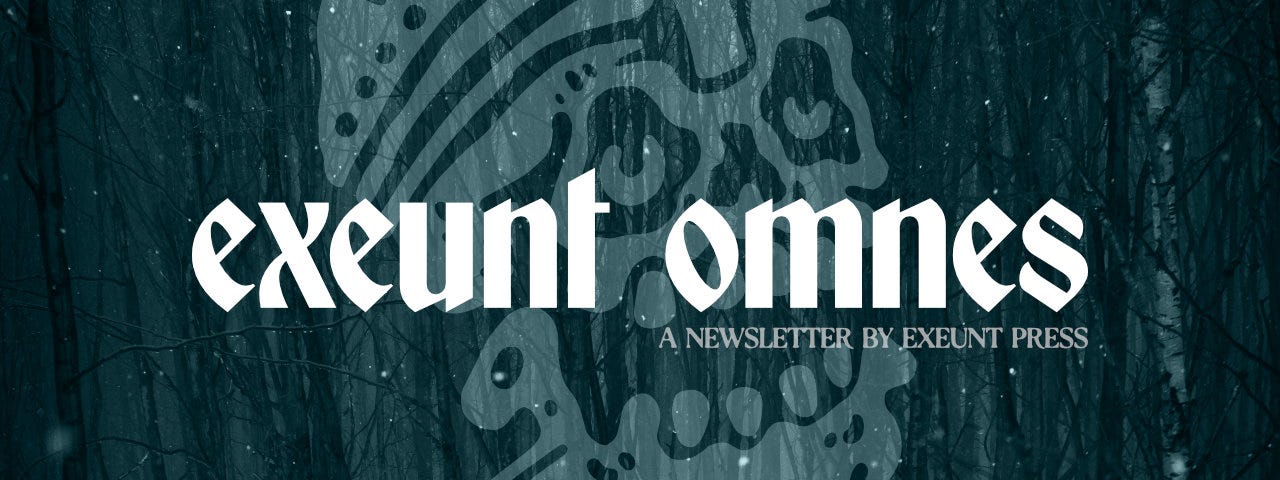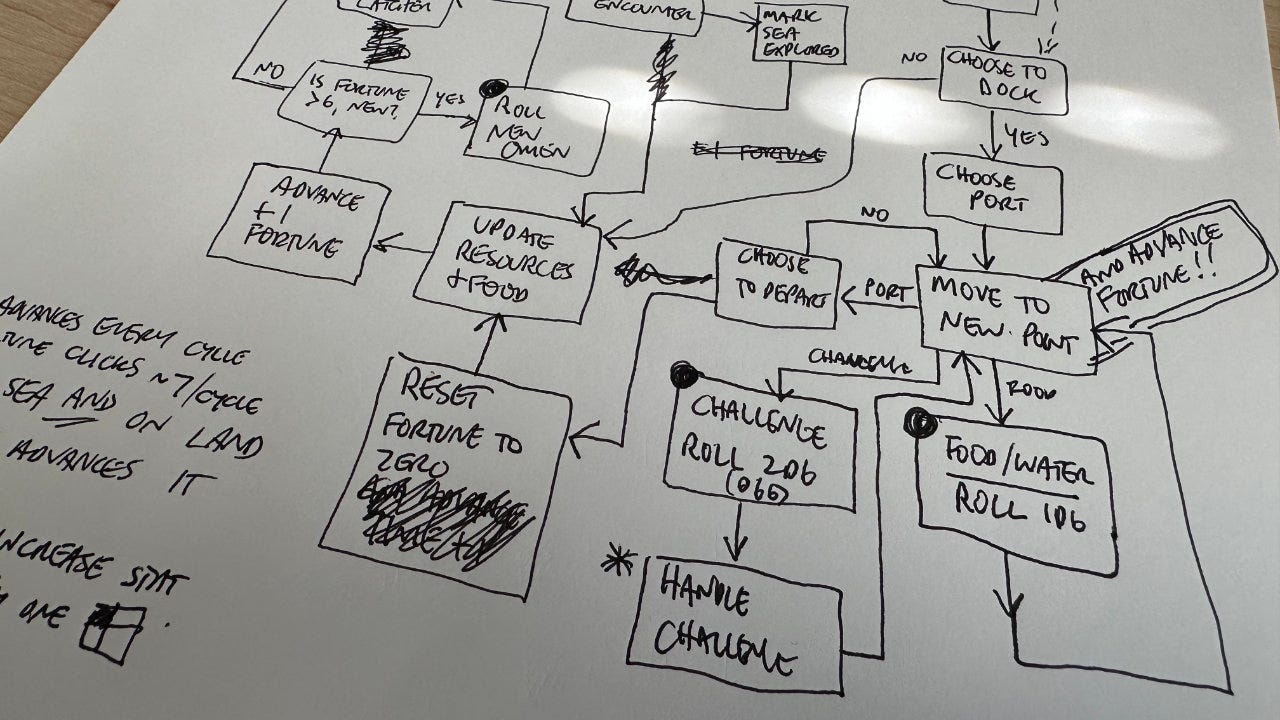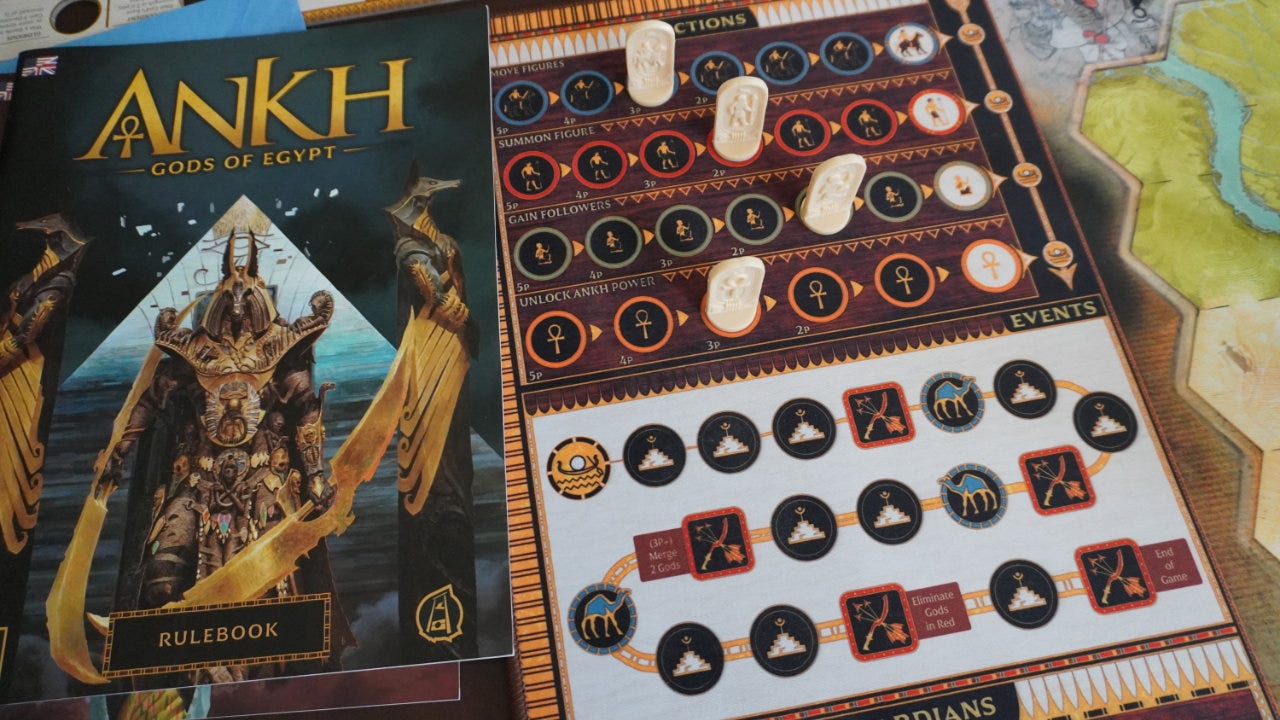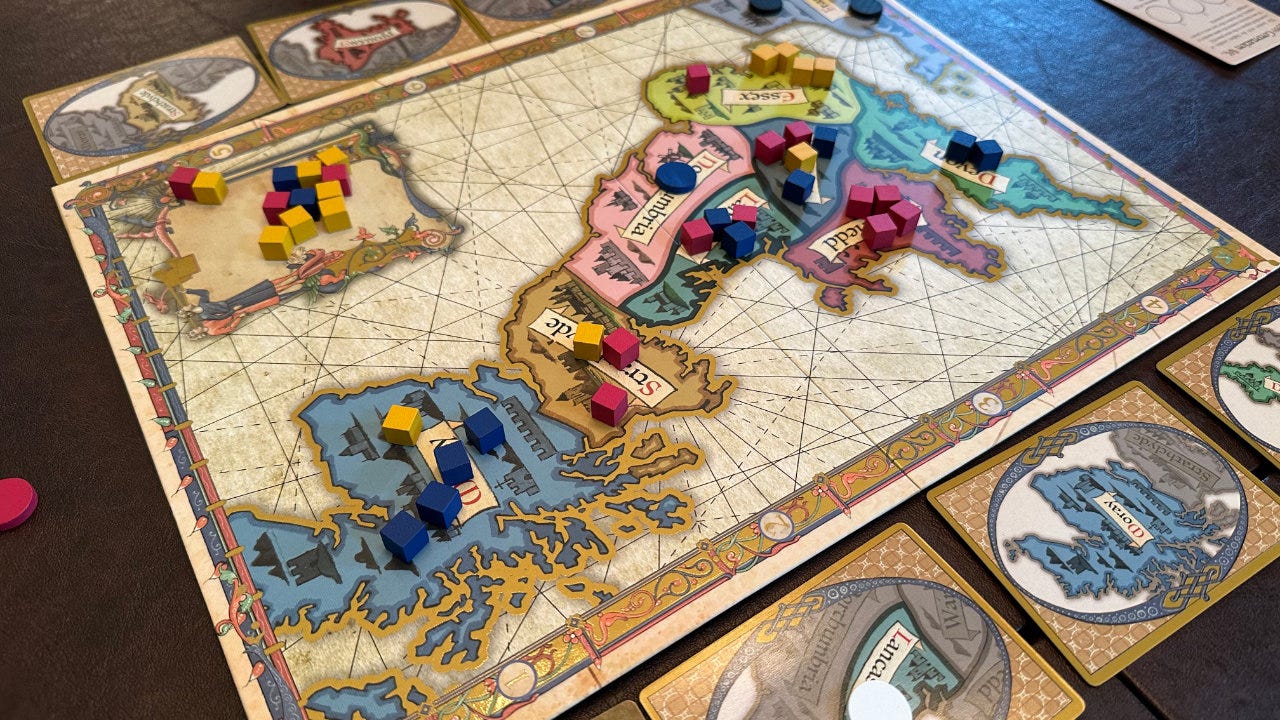See, Explore, Discover
Ratsail and testing, Ankh: Gods of Egypt, describing TTRPG areas, and The King is Dead
Welcome to Exeunt Omnes, the official newsletter for loyal fans and sworn enemies of Exeunt Press, creator of games such as Exclusion Zone Botanist and Eleventh Beast. You can find digital games at games.exeunt.press and physical products at shop.exeunt.press.
TL;DR Summary
🐀 Ratsail and the importance of testing
🐪 Action selection in Ankh: Gods of Egypt
👁️ See, Explore, Discover
🎲 Recently played: The King is Dead
🐀 Ratsail and the importance of testing
Last time I gave a brief preview of the upcoming Ratsail, a game inspired by a little drawing of rats in a boat (above) from the Pontifical de Guillaume Durand.
Ratsail has seen a lot of changes over the last two weeks!
Based on extremely valuable playtesting feedback, I realized a few important things:
Ratsail worked as a GM-less multiplayer TTRPG, but left a lot of work to be done by the players to facilitate it.
Players who were used to other Exeunt Press games like Exclusion Zone Botanist, Eleventh Beast, and You are a Muffin were confused by the lack of structure.
There was just too much dice rolling, especially when compared to other streamlined Exeunt Press games.
Players wanted more ability to explore discovered islands, and more structure around how that could be accomplished.
The core parts of Ratsail received a lot of love: the dice pool system, omen cycle, stats, theme, legends, bestiary, and mixture of land and sea travel.
I took all of this feedback and started making revisions to the Ratsail system, and I’m so glad I did! It’s becoming the streamlined, solo-first mixture of board game mechanisms and TTRPG storytelling that I love and am excited to play.
The lesson learned is that I should have let others see and test the game earlier in the process. That’s been hard for me, as I usually want to keep everything secret until it’s basically done. This example shows, however, that keeping it secret comes at a cost in rework and time, even if the end result is the same.
Test early. Test often. 🐀
SUBSCRIBE: Read Exeunt Omnes for Ratsail development updates.
🐪 Action selection in Ankh: Gods of Egypt
Ankh: Gods of Egypt (Lang, 2021) is an exceptionally good board game. In many ways, it distills the area control strategies of Blood Rage (Lang, 2015) and Rising Sun (Lang, 2018) down into their pure essence.
At two players, it’s very chess-like and almost a puzzle to solve. At four or five players, it’s a “knife fight in a phone booth” as everyone struggles to survive and avoid the infamous “merge” at the end of the game.
The most interesting part is the action selection mechanism using shared tracks. Knowing when to act and how to set yourself up to trigger the events is the key to winning the game.
The recent Skeleton Code Machine article on Ankh explores this mechanism, thinking about area majority combat, action selection, and giving your players many good options.
READ: Ankh: Gods of Egypt at Skeleton Code Machine
Skeleton Code Machine is a weekly publication that explores tabletop game mechanisms in board games and roleplaying games. It’s been called a “Seemingly endless source of gaming ponderings” and a “Goldmine.” Check it out at www.skeletoncodemachine.com.
👁️ See, Explore, Discover
Related to showing your work, Jface Games has been designing a TTRPG and sharing everything in videos and on Substack. It’s been interesting to follow along and see how the system has changed over time.
The recent Lost in the Eversea - Ep 1 video is a discussion of the first full campaign playtest set in the game’s watery world.
One of the interesting bits was how his notes for each area are organized as follows:
Title or name of area
Short description that can be read to players
See: Things that are immediately visible to the players, presumably without searching. Examples include the hull of a ship crashed on the shore, wall carvings, a giant crab. No special actions required to notice these things.
Explore: Things that players can find by searching and investigating. This could be an item revealing a hidden door, monsters hiding inside something, text to decipher, or an entrance to a lower level. Might require action or skill checks.
Discover: Things to discover beyond the face value of items. It could be that the lighthouse is actually a countdown to doom, or that the stones sitting on a map represent military units tied to the story.
It really had me thinking about how to write adventures that reduce the work required for the person running the game. This seems like a helpful way to describe rooms or areas. What if the adventure did that for you, instead of requiring you to make your own notes based on the description given?
The format I’ve typically used for MÖRK BORG adventures like A Pale Ground Covering All (shown above) is closer to the one used in Rotblack Sludge and maybe DNGN:
Title or name of area
Short description that can be read to players
Items, creatures, and NPCs: The main thing bolded (e.g. fish pond) but all mixed together in a single list. The same list would include Krum (guard), rotten meat, a large fish, and a portal.
Exits and connections: List of where each exit goes and in what general direction (e.g. north, south, east, west)
The biggest difference is that all the “things players can interact with” are mixed together, both interesting and mundane. There is no differentiation between things that can be obviously seen and those which require exploration. Major discoveries included throughout.
This format keeps descriptions compressed and allows for more rooms to fit onto a single page. There is a benefit in doing that, but of course it comes at a cost. It might put a little more work on the game master.
If nothing else, the “See, Explore, Discover” model has given me a lot to think about!
Is this “See, Explore, Discover” system used elsewhere? Is it commonly used? If you’ve seen it before, please leave a comment!
WATCH: Lost in the Eversea - Ep 1 at Jface Games
🎲 Recently played: The King is Dead
Had the opportunity to play The King is Dead: Second Edition (Sylvester, 2020) again, and it continues to be a really fun game.
BGG strongly recommends that this game is best at three players, and I completely agree. In fact, I wouldn’t bother playing it at other player counts. At three players, however, the game really shines.
With just a few cards to play, every action matters. Knowing when to pass and when to play a card becomes tense and critical. As a game about influence vs. control, every thing you do strengthens one faction and weakens another.
A lovely production, plays in about 45 minutes, and is extremely “thinky”.
PLAY: The King is Dead: Second Edition
Thanks for subscribing to Exeunt Omnes!
Check out games.exeunt.press for all the latest games and resources!
- E.P. 💀







Enjoy your Exeunt Omnes a day early! :)
See, Explore, Discover seems similar to the split in [DIY & dragons: Landmark, Hidden, Secret](https://diyanddragons.blogspot.com/2019/10/landmark-hidden-secret.html?m=1). The SED names seem better fit to rooms, while the LHS names align better with thinking about keying a wilderness hexcrawl.